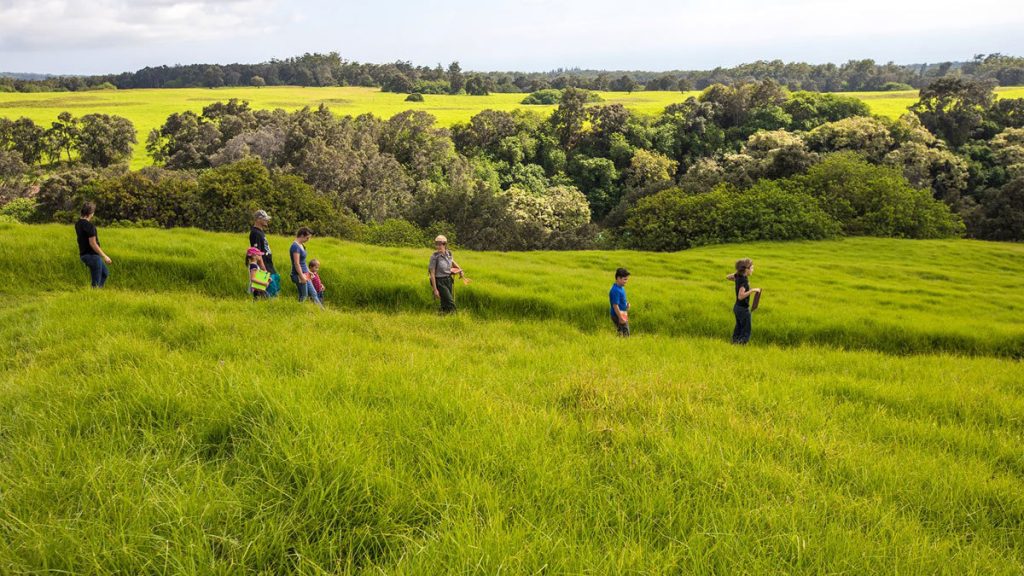Written by Jim Robbins / Yale Environment 360
A growing body of research points to the beneficial effects that exposure to the natural world has on health, reducing stress and promoting healing. Now, policymakers, employers, and healthcare providers are increasingly considering the human need for nature in how they plan and operate.
How long does it take to get a dose of nature high enough to make people say they feel healthy and have a strong sense of well-being?
Precisely 120 minutes.
In a study of 20,000 people, a team led by Mathew White of the European Centre for Environment & Human Health at the University of Exeter, found that people who spent two hours a week in green spaces — local parks or other natural environments, either all at once or spaced over several visits — were substantially more likely to report good health and psychological well-being than those who don’t. Two hours was a hard boundary: The study, published last June, showed there were no benefits for people who didn’t meet that threshold.
The effects were robust, cutting across different occupations, ethnic groups, people from rich and poor areas, and people with chronic illnesses and disabilities.
“It’s well-known that getting outdoors in nature can be good for people’s health and well-being, but until now we’ve not been able to say how much is enough,” White said. “Two hours a week is hopefully a realistic target for many people, especially given that it can be spread over an entire week to get the benefit.”
The study by White and his colleagues is only the latest in a rapidly expanding area of research that finds nature has robust effects on people’s health — physically, mentally, and emotionally.
The studies “point in one direction: Nature is not only nice to have, but it’s a have-to-have for physical health and cognitive function.”
“When I wrote Last Child in the Woods in 2005, this wasn’t a hot topic,” said Richard Louv, a journalist in San Diego whose book is largely credited with triggering this movement and who coined the term Nature Deficit Disorder. “This subject was virtually ignored by the academic world. I could find 60 studies that were good studies. Now it’s approaching and about to pass 1,000 studies, and they point in one direction: Nature is not only nice to have, but it’s a have-to-have for physical health and cognitive functioning.”
These studies have shown that time in nature — as long as people feel safe — is an antidote for stress: It can lower blood pressure and stress hormone levels, reduce nervous system arousal, enhance immune system function, increase self-esteem, reduce anxiety, and improve mood. Attention Deficit Disorder and aggression lessen in natural environments, which also help speed the rate of healing. In a recent study, psychiatric unit researchers found that being in nature reduced feelings of isolation, promoted calm, and lifted mood among patients.
The growing body of research — combined with an intuitive understanding that nature is vital and increased concerns about the exploding use of smart phones and other forms of technology — has led to tipping point at which health experts, researchers, and government officials are now proposing widespread changes aimed at bringing nature into people’s everyday lives.
For example, researchers and policymakers now talk about “park deserts” in urban areas. Cities are adding or enhancing parks, and schools and other institutions are being designed with large windows and access to trees and green space — or blue space, as in aquatic environments. Businesses are increasingly aware of the desire among employees for access to green spaces. “It’s needed to attract a skilled work force,” said Florence Williams, author of The Nature Fix. “Young people are demanding high-quality outdoor experiences.”
 A park ranger leads a hike through the Kahuku unit of Hawaiʻi Volcanoes National Park. NPS PHOTO/JANICE WEI
A park ranger leads a hike through the Kahuku unit of Hawaiʻi Volcanoes National Park. NPS PHOTO/JANICE WEI
The number of “forest schools” — which have long been a tradition in Scandinavia and where much of the learning takes place in natural settings in the outdoors — has mushroomed in the United States, up by 500 percent since 2012, according to Louv. Oregon recently passed a ballot measure to raise money for outdoor schools, and the state of Washington just became the first state to license outdoor preschools, where much of the play and learning occurs outside.
The organization Children & Nature Network, founded by Louv and others, advocates for more time in nature for children, tracks the research, and has a long list of abstracts that summarize studies on the subject on its website.
And The Trust for Public Lands (TPL) has just finished a seven-year project to map the parks of the U.S., with the aim of identifying places in need of parkland. “We’ve mapped 14,000 communities, 86 percent of the nation, and looked at who does and doesn’t live within a 10-minute walk of a park,” said Adrian Benepe, a senior vice president of TPL. The organization has a Ten Minute Walk campaign to work with mayors across the U.S. to make sure all people have that kind of access.
An increasing number of healthcare providers are also embracing the back-to-nature paradigm. One organization, Park RX America, founded by Robert Zarr of Unity Healthcare in Washington, D.C., declares its mission “to decrease the burden of chronic disease, increase health and happiness, and foster environmental stewardship, by virtue of prescribing Nature during the routine delivery of healthcare by a diverse group of health care professionals.” The organization has 10,000 parks in its “prescribing platform.”
One expert says he’s concerned that the growing interest in more contact with nature relies too much on only experiencing it visually.
The global Association of Nature and Forest Therapy Guides shows clients how to use immersion in nature for healing. “The forest is the therapist,” the group’s slogan reads. “The guides open the door.”
Studies show that the effects of nature may go deeper than providing a sense of well-being, helping to reduce crime and aggression. A 2015 study of 2,000 people in the United Kingdom found that more exposure to nature translated into more community cohesion and substantially lower crime rates.
And while more vegetation is thought to encourage crime by providing security for criminals, another study found the opposite — vegetation abundance is associated with a reduction in assault, robbery, and burglary, although not theft.
Still, many of these studies are correlational rather than causal. That means it’s hard to show that natural landscapes cause these effects, though these things happen when people are in a natural environment.
Sara L. Warber, professor of family medicine at the University of Michigan, noted that there are no “randomized, controlled studies” on the effects of nature on human health. Nonetheless, she said, there are epidemiological studies and measurements of before and after exposure to nature, and the results from this research are robust.

The view from atop Swiftcurrent Mountain in Montana. BRENDAN T LYNCH/FLICKR
Peter H. Kahn, a professor of psychology at the University of Washington who has worked on these issues for decades, is encouraged by the new focus on the subject but concerned that the growing interest in more contact with nature relies too much on only experiencing it visually. “That’s important, but an impoverished view of what it means to interact with the natural world,” he said. “We need to deepen the forms of interaction with nature and make it more immersive.”
What are the active ingredients in a dose of nature? Pioneers in this work, Rachel and Stephen Kaplan, who began studying the subject in the 1970s, devised Attention Restoration Theory, which holds that paying attention in bustling cities, at work, or in other stressful environments requires a good deal of effortful attention. In a natural environment, however, the Kaplans found that people paid attention more broadly and in a less effortful way, which leads to far more relaxed body and mind.
Japanese researchers have studied “forest bathing” — a poetic name for walking in the woods. They suspect aerosols from the forests, inhaled during a walk, are behind elevated levels of Natural Killer or NK cells in the immune system, which fight tumors and infections. A subsequent study, in which essential oils from cedars were emitted in a hotel room where people slept, also caused a significant spike in NK cells.
However this growing field might be defined, it is gaining momentum. In a recent paper, 26 authors laid out a framework to create a formal role for the positive impacts nature has on mental health and to formulate a model for conserving nature in cities and integrating it into planning for these health effects.
“There is an awakening underway today to many of the values of nature and the risks and costs of its loss,” says one researcher.
“We have entered the urban century, with two-thirds of humanity projected to be living in cities by 2050,” said Gretchen Daily, director of the Natural Capital Project at Stanford University and a senior author of a recent paper arguing that the cognitive and emotional benefits of nature should be factored into economic ecosystem service models. “There is an awakening underway today to many of the values of nature and the risks and costs of its loss. This new work can help inform investments in livability and sustainability of the world’s cities.”
While the research has grown leaps and bounds, Kahn and others argue in a recent review paper that research into the topic is still lacking in many ways, and they lay out a research agenda they say would help formalize the role of nature in public health policy.
Understanding nature’s therapeutic effects may be arriving at a propitious moment. Some studies have found that anxiety over climate change is a growing phenomenon. Ironically, one of the best antidotes for that might be a dose of green space.
“If I am feeling depressed and anxious and worried about the environment,” Warber said, “then one of the best things I can do is go out in nature.”


